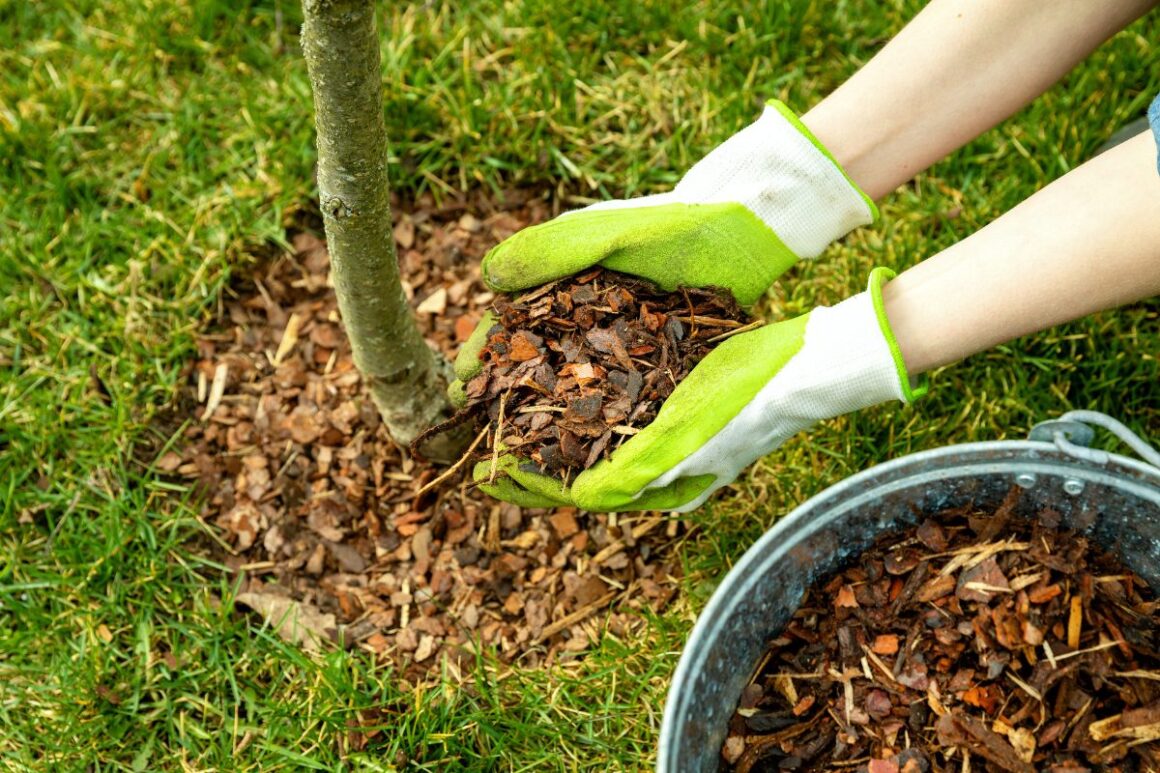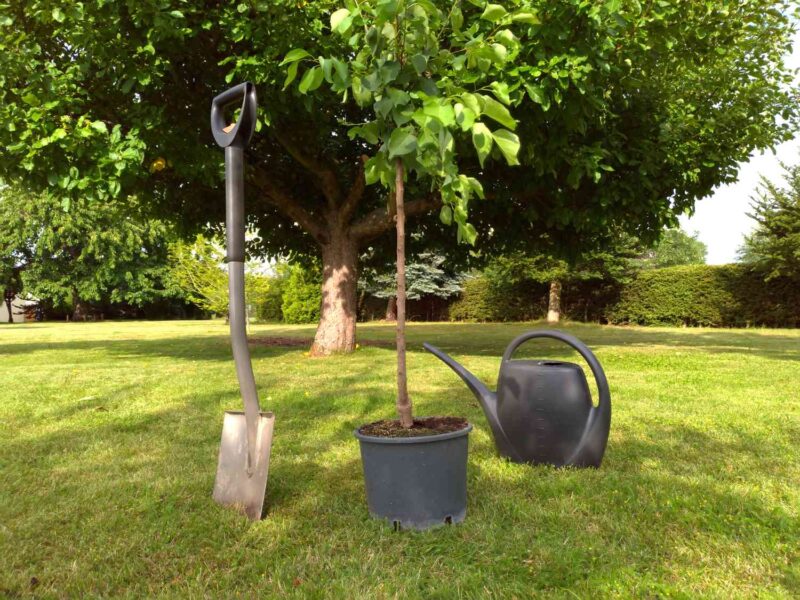If you’re like many homeowners, you might enjoy the idea of having a beautiful garden but lack the time or energy to commit to extensive upkeep.
Enter mulching, the lazy gardener’s best friend. Mulching around trees can significantly improve their health with minimal effort.
Whether you’re a seasoned gardener or just starting, these tree pruning techniques will help you mulch your trees effectively and efficiently.
The Basics of Mulching
Mulching involves covering the soil around your trees with a layer of material that helps retain moisture, suppress weeds, and improve soil health. Common mulching materials include wood chips, bark, straw, and compost.
The key is to spread the mulch evenly around the base of your trees but be careful not to pile it up against the trunk. This practice, known as “volcano mulching” can harm your trees by trapping moisture against the bark and encouraging rot.
Benefits of Mulching

One of the primary benefits of mulching is moisture retention. A good layer of mulch helps keep the soil moist by reducing evaporation. This is especially important during hot summer months when trees can quickly become stressed due to lack of water.
Additionally, mulch acts as an insulator, keeping roots cooler in the summer and warmer in the winter.
Choosing the Right Mulch
Not all mulches are created equal, and choosing the right one can make a big difference. Organic mulches, such as wood chips, bark, and compost, are excellent choices because they decompose over time, adding valuable nutrients to the soil.
Inorganic mulches, like gravel or stones, do not break down and therefore do not improve soil fertility, but they can be useful in certain landscaping situations where aesthetics or drainage is a priority.
Application Techniques
Proper mulching technique is crucial for the health of your trees. Start by clearing the area around the tree, and removing any grass or weeds. Spread a layer of mulch about 2-4 inches deep around the base of the tree, extending it out to the drip line (the area directly under the outer circumference of the tree’s branches).
Be sure to leave a gap of about 6 inches between the mulch and the tree trunk to prevent moisture buildup and rot.
When to Mulch

Timing is important when it comes to mulching. The best times to mulch are in the spring and fall. Mulching in the spring helps conserve moisture as the weather warms up and suppresses the growth of spring weeds.
Fall mulching, on the other hand, provides insulation for the roots during the colder months and helps retain moisture during the dry winter season.
Maintaining Your Mulch
Mulch needs to be maintained to continue providing benefits to your trees. Over time, organic mulch will break down and become less effective at retaining moisture and suppressing weeds. Check your mulch layer every few months and replenish it as needed to maintain a depth of 2-4 inches.
In conclusion
Mulching is a lazy gardener’s secret weapon for tree care. By following these tips, you can ensure your trees remain healthy and vibrant with minimal effort. Happy gardening!



